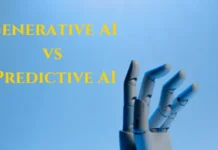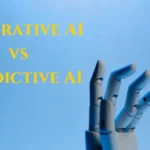In the digital age in which we find ourselves, it goes without saying that all businesses seek to distinguish themselves at an operational level, showing apparent efficiency and effectiveness, reducing costs, increasing productivity, or reducing time-to-market through different tools.
From Stratasys, they make a forecast of what will be the 5 trends in hyper-automation that will help us the most in the short term in that search for operational efficiency:
1. Task mining or task mining: We usually talk about Process Mining or Process Mining; however, in the short term, it is much more helpful for us to quickly improve the efficiency of a process by identifying which tasks are carried out within it, discovering which of them can be digitized, automate or simply optimize by applying Lean techniques, for example.
These tools allow us to reduce the investment required through classic models based on interviews with different stakeholders.
2. Robotic Desktop Automation (RDA) or Desktop Process Automation: In all the already digitized processes, there are usually a series of tasks that a user executes in his job procedurally or repetitively, so they can be automated, reducing costs, freeing up capacity for functions with more excellent added value, cutting delivery times, and minimizing errors.
Also Read: Truths and False Beliefs About Big Data
“We’ve all heard of Robotic Process Automation (RPA), which tends to have a broader scope by working with processes that affect multiple users, departments, or applications, and typically runs on a remote server. Both RPA, RDA, BPM, and other automation tools fall under the umbrella of Digital Process Automation (DPA)”, Eduardo Jiménez, executive manager of Stratasys, points out.
3. Artificial Intelligence and AIOps: Artificial intelligence can help us automate specific tasks for which decisions need to be made. Although AI cannot make the right decision independently in all cases, it will at least simplify the decision-making process, reducing dedicated time and optimizing the business process.
Through AIOps, we will be able to deal with one of the biggest problems of Artificial Intelligence, which is the correct management of the life cycle of algorithms and their performance.
In addition, we will be able to simplify the arrival of these algorithms to automated processes with other tools.”
4. Virtual Assistants: Some of the business processes require interaction by different teams, with the complexity of combining rhythms of both and establishing points in common that this requires. For this reason, a virtual assistant, such as a chatbot or a voicebot, can help us quickly and efficiently channel communication between customers and suppliers, users and support teams, etc., avoiding dependency and saving time for the user.
5. Low-code apps: Today, in all organizations, many processes still do not have a structure and are, therefore, difficult to follow and monitor. For this reason, this type of low-code development tool allows us to create applications in record time that help structure these processes digitally and, therefore, provide organizations with the ability to monitor these processes.
In addition to all of the above, a cross-market trend takes us to levels of abstraction never seen before, in which organizations project themselves towards a no-code world.
They intend to give the leadership of their transformation to their DigitalOps teams through the modeling and monitoring of their operations with systems that allow the creation of a complete Digital Twin of said organizations to manage and digitize the execution of tasks and processes of all kinds.
Also Read: Benefits of Digitization in Companies










![Imginn Instagram Story and Photos Anonymous Viewer Tool [Free] Imginn](https://www.iblogtech.com/wp-content/uploads/2023/09/imginn-150x150.webp)



